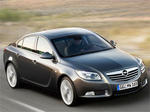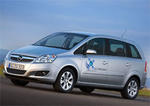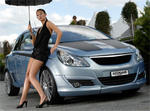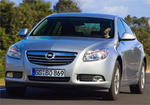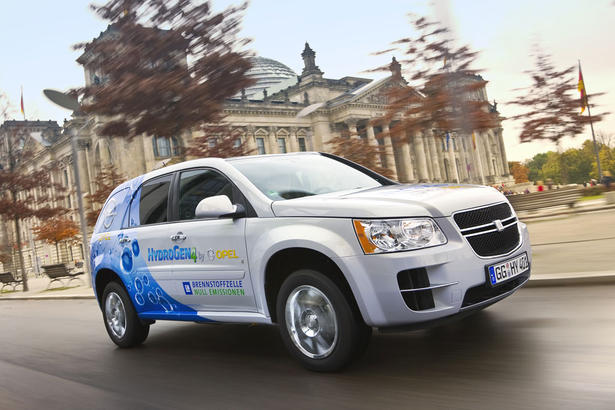
General Motors announced today that the Opel HydroGen4 has began real world testing in Europe. Nine Berlin companies will test the new Opel HydroGen4 on the streets of the German city: ADAC, Allianz, Coca Cola, Hilton, Linde, Schindler, Axel Springer, Total and Veolia.
The Opel HydroGen4 uses a 440 single cells fuel cell stack that combines hydrogen and oxygen from the air to produce electricity. The Opel HydroGen4 is equipped with a 73kW-synchronous electric motor that is able to accelerate the car from 0 to 62 mph in 12 seconds and up to a top speed of 100mph.
The Opel HydroGen4 is also equipped with a 1.8 kWh buffer battery that's used for storing energy from the car's regenerative braking system.
GM Press Release:
The goal of achieving sustainable mobility with zero emissions came a step closer today when GM announced the European part of its biggest ever test program for fuel cell vehicles.
Nine companies will be the first to operate GM’s HydroGen4 zero-emission vehicles in the Berlin area as they go about their day-to-day business: ADAC, Allianz, Coca Cola, Hilton, Linde,
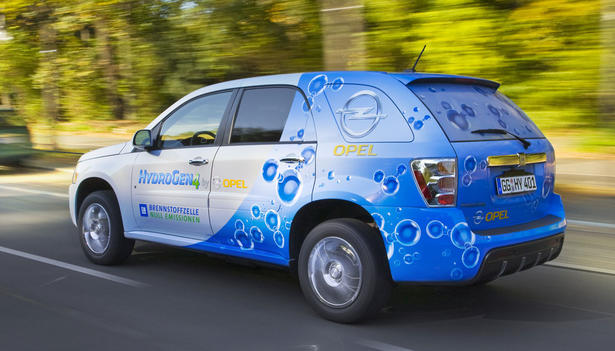
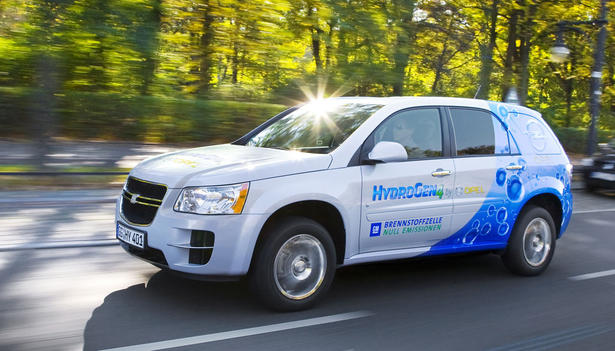
Schindler, Axel Springer, Total and Veolia. This real-world road test will run under the umbrella of the Clean Energy Partnership (CEP), a German Federal Department for Transport, Building and Urban Development funded project focused on proving the day-to-day suitability of hydrogen as a fuel for road transport.
“We are delighted that these high profile business partners have joined us as we take zero emission fuel cell technology forward with the HydroGen4 program,” said GM Europe President Carl-Peter Forster.
HydroGen4 on the Road
As an integral part of GM’s overall advanced technology strategy towards further electrification of the car, this fourth generation fuel cell vehicle is the culmination of more than 10 years development work with hydrogen and fuel cell technology. The HydroGen4 features improvements in everyday usability, such as performance and durability. Globally, GM deploys more than 100 vehicles of this type in its Project Driveway testing program in the U.S., Japan, Korea, China, and Germany.
In the U.S., more than 100,000 people have applied as mainstream drivers for the market test. To date, 3,400 people have driven the vehicles and 30 families have used the vehicle on a daily basis over a period of around three months. In total, the vehicles were driven almost 435,000 miles. Feedback from these demonstration activities not only gives GM engineers essential validation data, but also provides a valuable insight into the likely ownership and driving experience of future customers.
The vehicles are equipped with a wireless data transfer system that assists engineers by uploading vehicle performance data to a company server. Maintenance of the vehicles deployed in Berlin will be done at a regular Opel dealer
equipped with the personnel and tools necessary for servicing fuel cell vehicles.
HydroGen4’s fuel cell stack uses 440 single cells which combine hydrogen and oxygen from the air to produce electricity, with water vapour as the only by-product, and therefore zero emissions. The fuel cell stack provides the electric energy for the 73kW-synchronous electric motor, delivering acceleration of 0-62mph in around 12 seconds and a top speed of 100mph.
The electric motor’s instant torque characteristics also give the vehicle an excellent pick-up from low speed. The HydroGen4 is fitted with a 1.8 kWh buffer battery to store energy from the vehicle’s regenerative braking system and cover peak electrical loads. The three carbon-fiber composite tanks hold 4.2 kg of hydrogen at a pressure of 700 bars, sufficient for an operating range of up to 320 kilometers.
HydroGen4 can start and run in sub-zero temperatures, a considerable advance over the previous generation technology and an important benefit for everyday usability. It is designed to be as safe as conventional vehicles and includes unique hydrogen safety features in each of its major systems.





